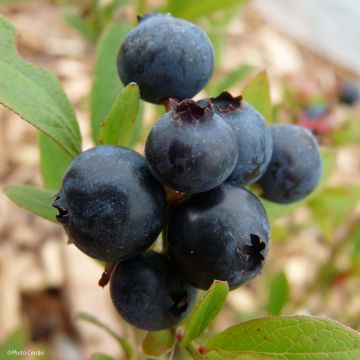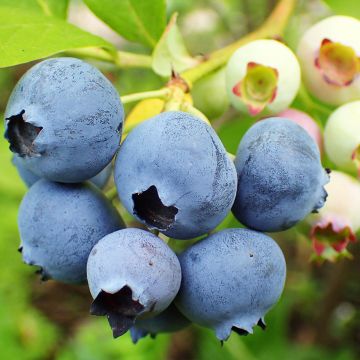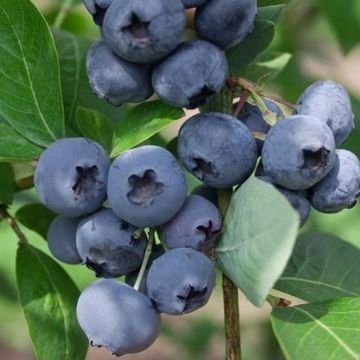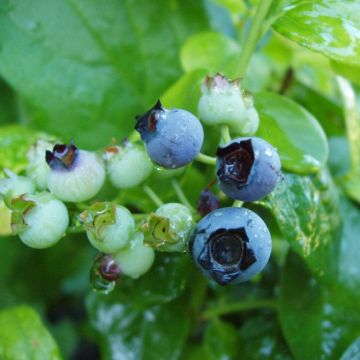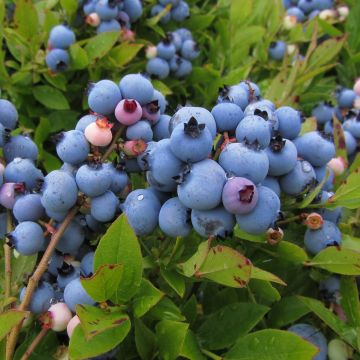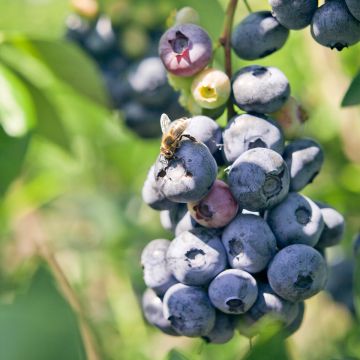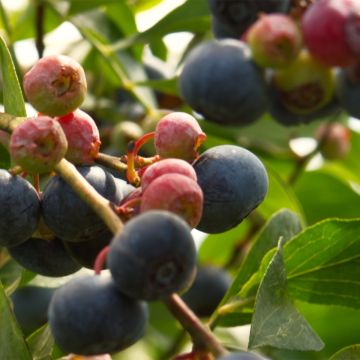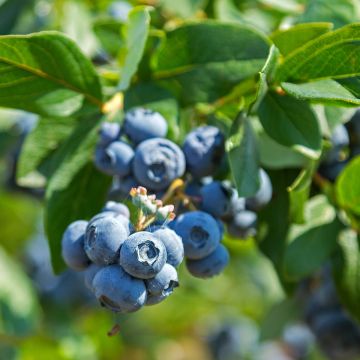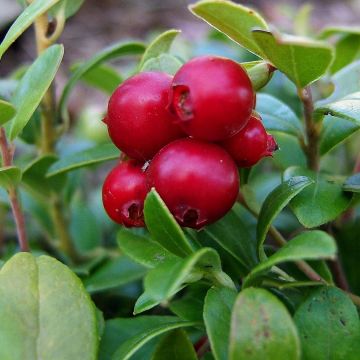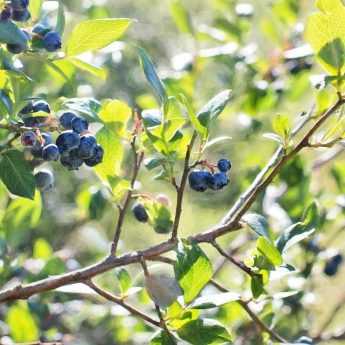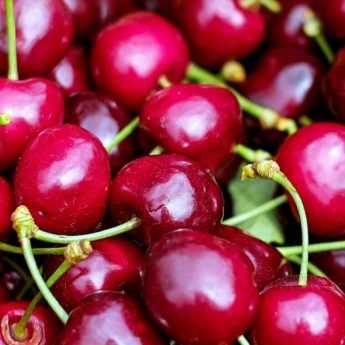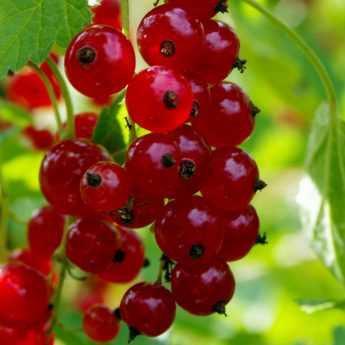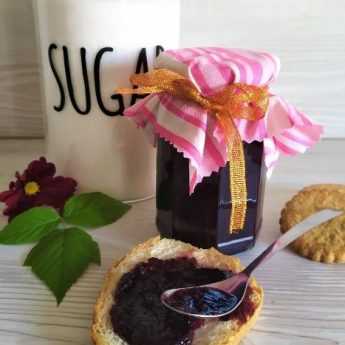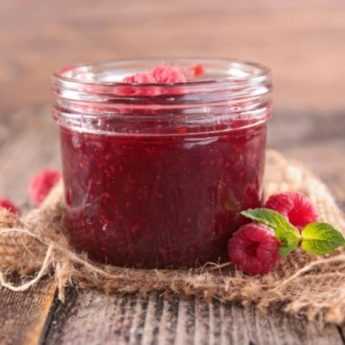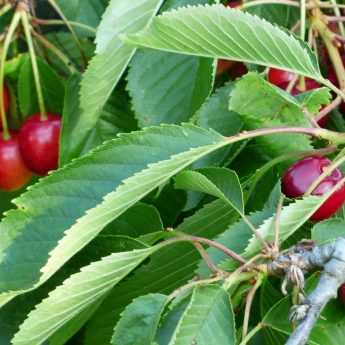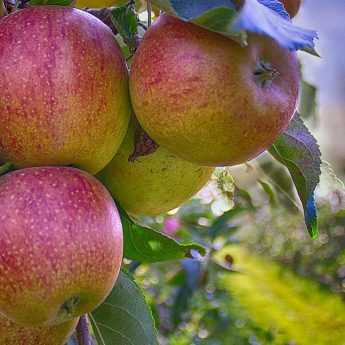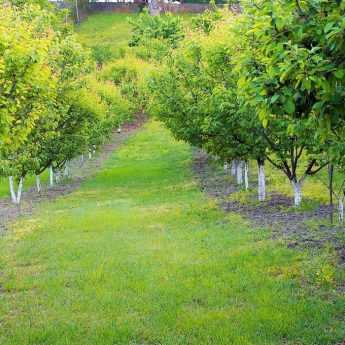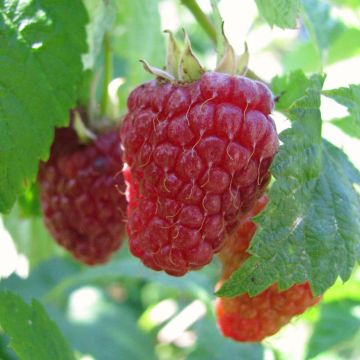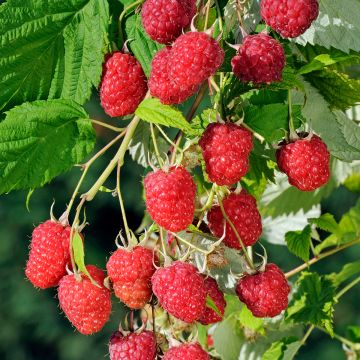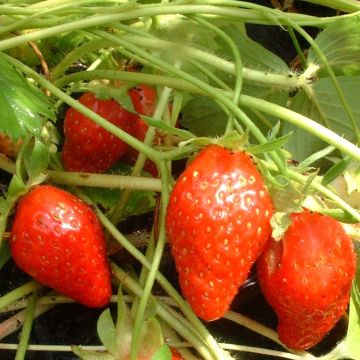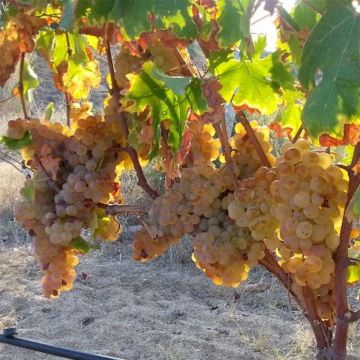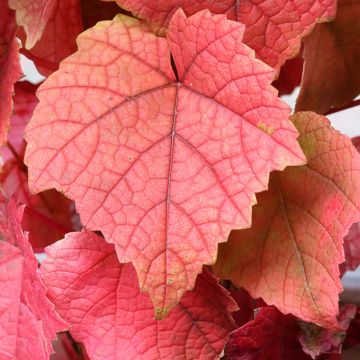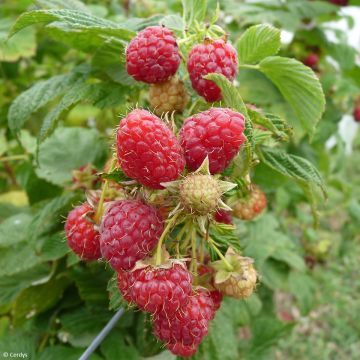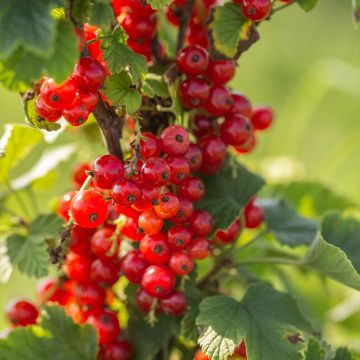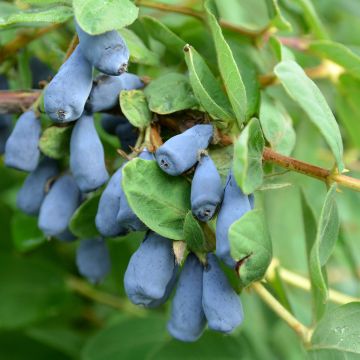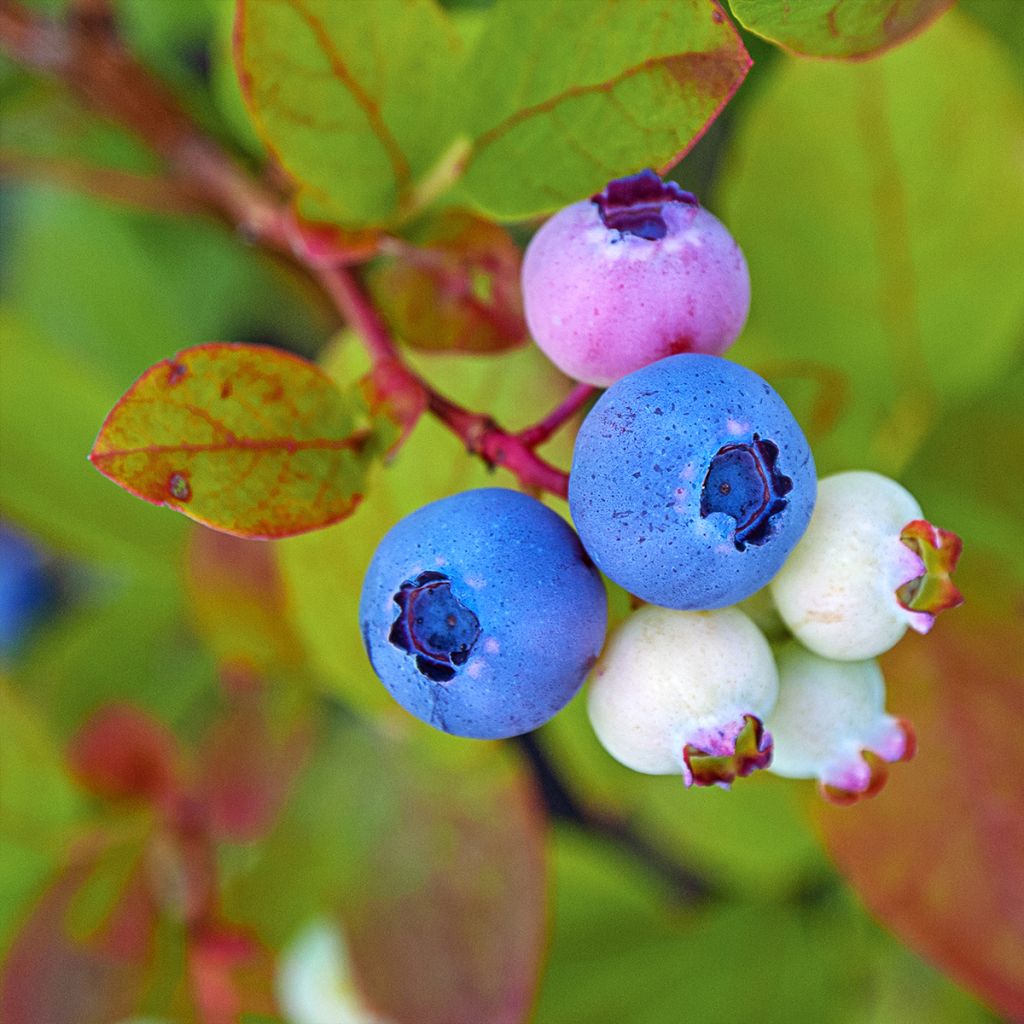

Vaccinium corymbosum Legacy- American Blueberry
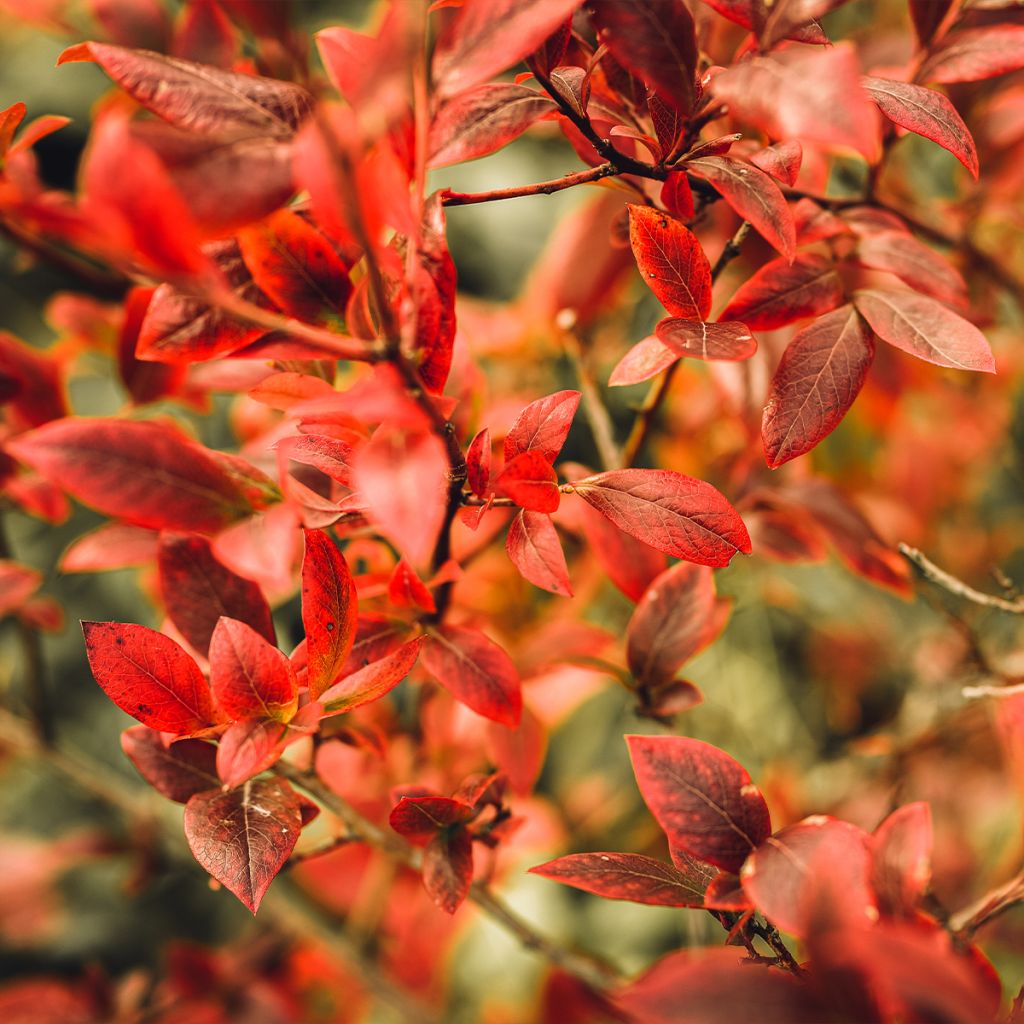

Vaccinium corymbosum Legacy- American Blueberry
Vaccinium corymbosum Legacy- American Blueberry
Vaccinium corymbosum Legacy
American Blueberry, Highbush Blueberry
This item cannot be shipped to the selected country
Delivery charge from €6.90
Delivery charge from €6.90
More information
Delivery charge from €6.90
Delivery charge from €6.90
More information
Schedule delivery date,
and select date in basket
This plant carries a 6 months recovery warranty
More information
We guarantee the quality of our plants for a full growing cycle, and will replace at our expense any plant that fails to recover under normal climatic and planting conditions.
From €7.90 for pickup delivery and €6.90 for home delivery
Express home delivery from €8.90.
From €7.90 for pickup delivery and €6.90 for home delivery
Express home delivery from €8.90.

Description
Vaccinium corymbosum 'Legacy' is a mid-season blueberry variety with very large fruits, moderate growth, suitable for small spaces and container gardening. This bush is covered in May with small pinkish-white bell-shaped flowers, which are highly decorative against the fairly dark green foliage. They develop into large blueberries, ready to be harvested from mid-July to late August. Both decorative and delicious, they can be consumed fresh or in desserts. In autumn, the foliage takes on magnificent orange colours. For all blueberries, fruiting is even more abundant if another variety is planted nearby.
The Blueberry Bush belongs to the Ericaceae family, best known in the garden for its many ornamental genera. The shrubby blueberry (Vaccinium corymbosum), native to North America, is the one cultivated in gardens for its abundant and high-quality fruiting. It is an extremely hardy bush with deciduous foliage that falls in autumn. It is grown in very acidic soil (not tolerant of limestone), in a semi-shaded position, for example in the morning sun.
The 'Legacy' cultivar is an American horticultural creation dating back to 1993. It is a slow-growing bush distinguished by its compact habit and very large fruits. With an upright and slightly spreading habit, this bush does not exceed 1.50m (5ft) in height and 1.20 m (4ft) in width. The foliage consists of fairly dark green elliptical and pointed leaves. Its upright branches take on beautiful autumn colours in shades of orange, giving it real ornamental value.
This is enhanced by its charming flowering, when in May this bush is covered in small bell-shaped white flowers, distinctly tinged with pink. In the case of Legacy, these flowers develop into very large blueberries with a slight bloom, slightly acidic in taste. They can be harvested for 5 to 6 weeks, from mid-July to late August.
In terms of nutrition, it should be noted that blueberries are low-calorie fruits but of high nutritional value: they are very rich in vitamins A, B, and C, calcium, and iron. They contain pigments (anthocyanins) that improve night vision. Blueberries can be consumed freshly picked, in juice, jam, jelly, sorbet, or in pastries (pies, muffins). The fruit can be stored for about ten days after picking and can be frozen for longer preservation.
Plant "Legacy" alongside other varieties to promote a good harvest. Its flowering and especially its flamboyant autumn colours are particularly decorative and will not look out of place among "solely ornamental" shrubs. In the background of your group of Blueberry Bushes, plant the amazing Cornus Kousa Milky Way, a dogwood that has exceptional flowering, with "flowers" that cause the foliage to disappear in May-June, decorative strawberry-shaped fruits from September, and foliage that turns bright scarlet in autumn. You can also create beautiful combinations with one of the many ornamental varieties of Magnolia, an exceptional genus known for its flowering.
Vaccinium corymbosum Legacy- American Blueberry in pictures
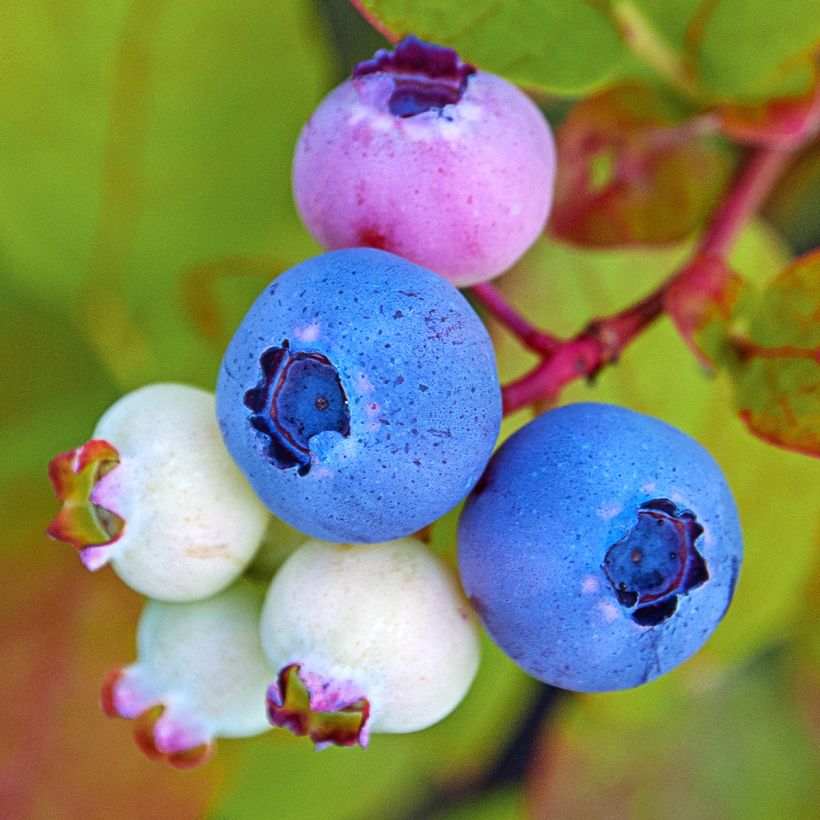

Plant habit
Fruit
Flowering
Foliage
Botanical data
Vaccinium
corymbosum
Legacy
Ericaceae
American Blueberry, Highbush Blueberry
Cultivar or hybrid
Other Blueberry bush
View all →Planting and care
Planting the Blueberry Bush is ideally done in autumn or throughout the year, avoiding frost and heatwaves. This bush is planted in the sun (not scorching) in cooler regions and strictly in partial shade in hotter southern areas. If you plant multiple plants, space them 1.20m (4ft) apart in all directions. This Blueberry Bush is very hardy (-30°C (-22°F) and below for the plant but -5°C (23°F) for the flowers) and has a long lifespan (20 to 30 years).
Plant it in a highly acidic soil (pH between 4 and 5.5), incorporating pure ericaceous soil, or in a mixture of regular soil and peat with well decomposed bark compost. The collar (junction between the trunk and the roots) should be level with the ground. Firmly press and water abundantly with non-limestone water. In slightly limestone soil, dig a hole 50 to 60cm (20 to 24in) deep, line the edges with garden felt, place a 10cm (4in) thick layer of non-limestone gravel at the bottom, then fill with a mixture of compost and ericaceous soil.
The soil should remain moist, but not waterlogged: the plant tolerates moderate drought and fears stagnant humidity. If watering is necessary, use non-limestone and non-chlorinated water (e.g. rainwater). Mulch the base with crushed bark, straw, or fern leaves to a thickness of 10 to 15cm (4 to 6in). It is sometimes useful to put a protective net if birds become too greedy during harvest. In spring, annually apply some well-rotted compost on the surface. The Blueberry Bush is not very susceptible to diseases and pests.
Due to its compact habit, this variety can also be grown in a container, especially if your soil is limestone.
Planting period
Intended location
Care
Planting & care advice
-
, onOrder confirmed
Reply from on Promesse de fleurs
Berries
Haven't found what you were looking for?
Hardiness is the lowest winter temperature a plant can endure without suffering serious damage or even dying. However, hardiness is affected by location (a sheltered area, such as a patio), protection (winter cover) and soil type (hardiness is improved by well-drained soil).

Photo Sharing Terms & Conditions
In order to encourage gardeners to interact and share their experiences, Promesse de fleurs offers various media enabling content to be uploaded onto its Site - in particular via the ‘Photo sharing’ module.
The User agrees to refrain from:
- Posting any content that is illegal, prejudicial, insulting, racist, inciteful to hatred, revisionist, contrary to public decency, that infringes on privacy or on the privacy rights of third parties, in particular the publicity rights of persons and goods, intellectual property rights, or the right to privacy.
- Submitting content on behalf of a third party;
- Impersonate the identity of a third party and/or publish any personal information about a third party;
In general, the User undertakes to refrain from any unethical behaviour.
All Content (in particular text, comments, files, images, photos, videos, creative works, etc.), which may be subject to property or intellectual property rights, image or other private rights, shall remain the property of the User, subject to the limited rights granted by the terms of the licence granted by Promesse de fleurs as stated below. Users are at liberty to publish or not to publish such Content on the Site, notably via the ‘Photo Sharing’ facility, and accept that this Content shall be made public and freely accessible, notably on the Internet.
Users further acknowledge, undertake to have ,and guarantee that they hold all necessary rights and permissions to publish such material on the Site, in particular with regard to the legislation in force pertaining to any privacy, property, intellectual property, image, or contractual rights, or rights of any other nature. By publishing such Content on the Site, Users acknowledge accepting full liability as publishers of the Content within the meaning of the law, and grant Promesse de fleurs, free of charge, an inclusive, worldwide licence for the said Content for the entire duration of its publication, including all reproduction, representation, up/downloading, displaying, performing, transmission, and storage rights.
Users also grant permission for their name to be linked to the Content and accept that this link may not always be made available.
By engaging in posting material, Users consent to their Content becoming automatically accessible on the Internet, in particular on other sites and/or blogs and/or web pages of the Promesse de fleurs site, including in particular social pages and the Promesse de fleurs catalogue.
Users may secure the removal of entrusted content free of charge by issuing a simple request via our contact form.

































